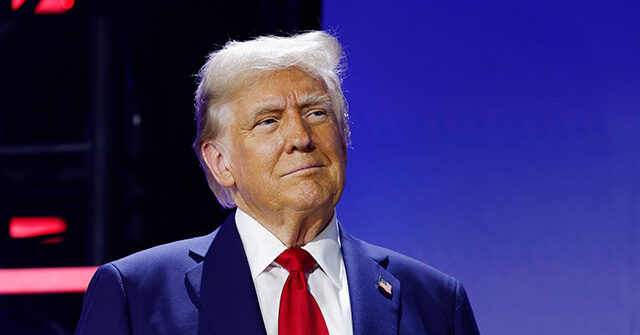Recent polling indicates that former President Donald Trump is gaining traction in traditionally Democratic states such as Virginia and Minnesota ahead of the 2024 presidential election. A Rasmussen Reports/American Thinker survey conducted among likely voters in Virginia reveals a competitive race between Trump and Vice President Kamala Harris. According to the survey, Harris currently leads with 48 percent support, closely followed by Trump at 46 percent, while 2 percent favor other candidates and 3 percent remain undecided—an essential portion that could ultimately influence the election’s outcome. Compounding this narrative, a significant 51 percent of respondents believe they are not better off than they were four years ago, and half express concerns that the younger generation will fare worse than their parents.
The survey highlights the foremost issues concerning Virginia voters: rising prices and illegal immigration—areas where Trump traditionally polls well. Notably, a prevailing sentiment among voters suggests a desire to curtail legal immigration in the U.S., aligning with Trump’s policy positions. Additionally, many respondents view the situation at the southern border through a lens of urgency, describing it as an “invasion.” This data reflects a shift in sentiment among voters in Virginia, which has historically leaned Democratic, having not swung Republican in a presidential election for the past two decades. Notably, Trump lost the state that past two election cycles by significant margins, losing by 5.3 percent in 2016 and 10.1 percent in 2020.
Similarly, polls from Minnesota suggest a neck-and-neck matchup between Trump and Harris as well. A MinnPost-Embold Research survey shows Trump trailing Harris by about three percentage points, with Harris at 47.7 percent and Trump at 45.1 percent. Intriguingly, independent voters in Minnesota appear to be leaning significantly toward Trump, with a nine-point margin favoring him. If Trump manages to secure Minnesota’s electoral votes, it would mark a historical achievement for the GOP, as the state has not voted Republican since 1972. The close margins observed in both Virginia and Minnesota signal potential shifts in voter alignment, particularly among independents who often play a pivotal role in closely contested elections.
Trump’s ambitious electoral strategy is focused on capitalizing on these developments. He has expressed his intent to make a concerted effort to capture states that have not traditionally supported Republican candidates, including New York, New Jersey, Virginia, New Mexico, and Minnesota. In a previous interview, he emphasized his plans to aggressively contest these states, indicating that he may even host high-profile events such as rallies at iconic venues like Madison Square Garden to galvanize support among voters.
As the election date approaches, the dynamics in these blue states are subject to change, and Trump’s efforts to sway voters could pay off. The political landscape in both Virginia and Minnesota showcases the heightened volatility leading into the 2024 election, with factors such as economic concerns, immigration policies, and the perceived efficacy of the current administration playing significant roles in shaping voter opinions. If Trump maintains momentum, these results could fundamentally alter the trajectory of his campaign.
With his rallies and public appearances aimed at energizing his base and attracting undecided voters, Trump is clearly intent on reshaping the narrative in states where Democratic dominance has been a fixture for years. Increased voter engagement, particularly among independents, will be crucial for the Republican candidate’s chances of success in these key battlegrounds. As the race unfolds, both parties will closely monitor any further shifts in polling data that may signify the potential for Republican victories in historically blue regions.

